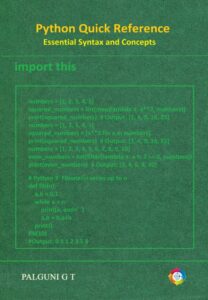Quantum computing uses the principles of quantum mechanics to process information in powerful new ways that are impossible for classical computers.
🔹 1 Qubits (Quantum Bits)
What It Is:
- A qubit is the basic unit of quantum information, similar to a classical bit, but with unique quantum properties.
- While a classical bit can be either 0 or 1, a qubit can be in a state of 0, 1, or both at the same time (via superposition).
Example:
- A classical bit: 0 or 1
- A qubit: α∣0⟩+β∣1⟩, where α and β are probability amplitudes.
📌 This ability to hold multiple states simultaneously gives quantum computers their immense potential.
🔹 2 Superposition
What It Is:
- A qubit can exist in a combination of states—both 0 and 1—at once.
- When measured, it “collapses” into either 0 or 1, with probabilities depending on its state.
Example:
- A qubit might be 70% likely to be in state 0, and 30% in state 1 before measurement.
Why It Matters:
- This allows quantum computers to process many possible outcomes simultaneously.
- With just 2 qubits, you can represent 4 states at once. With n qubits, you can represent 2n2^n2n states.
🔹 3 Entanglement
What It Is:
- Entanglement is when two or more qubits become linked, so that the state of one instantly affects the state of the other, no matter how far apart they are.
Example:
- If qubit A and B are entangled, and measuring A gives 0, then B will instantly be 1—even if they’re far apart.
Why It Matters:
- Enables quantum parallelism and fast information transfer across qubits.
- Crucial for quantum teleportation and quantum error correction.
🔹 4 Quantum Interference
What It Is:
- Interference is the phenomenon where quantum states can combine to amplify or cancel each other out.
- Quantum algorithms use interference to increase the probability of correct answers and cancel out wrong ones.
Example:
- Grover’s Algorithm (used for searching unsorted data) uses interference to boost the right answer and suppress all others.
Why It Matters:
- Without interference, quantum computations would just be random.
- It’s how quantum algorithms steer computations toward the correct solution.
🔹 5 Decoherence
What It Is:
- Decoherence is the loss of quantum behavior when a quantum system interacts with its environment.
- It causes qubits to lose superposition or entanglement, collapsing into classical states.
Example:
- A qubit in superposition exposed to heat or vibration may “decohere” and behave like a classical bit.
Why It Matters:
- Decoherence is the main challenge in building stable quantum computers.
- Quantum systems must be isolated and cooled near absolute zero to reduce decoherence.
🔹 6 Quantum Tunneling
What It Is:
- In classical physics, a particle can’t pass through a barrier if it doesn’t have enough energy.
- In quantum mechanics, a particle has a probability of “tunneling” through the barrier—even if it seems impossible.
Example:
- In quantum annealing (used in D-Wave computers), qubits can tunnel through “energy hills” to find the lowest energy state or optimal solution.
Why It Matters:
- Tunneling allows quantum systems to escape local minima and explore global solutions, improving optimization.
🔹 7 Measurement and Collapse
What It Is:
- When a quantum system is measured, its wave function collapses into one definite state.
- This process destroys superposition and entanglement.
Example:
- A qubit in superposition α∣0⟩+β∣1⟩ will become either 0 or 1 after measurement.
Why It Matters:
- Measurement determines the final result of a quantum computation.
- Timing and technique of measurement are crucial—measuring too early can destroy the computation.
🧬 Summary Table
| Principle | Description | Example / Use |
|---|---|---|
| Qubits | Basic unit of quantum info; stores 0, 1, or both | Used in quantum logic gates |
| Superposition | A qubit can be in multiple states simultaneously | Parallel computation |
| Entanglement | Linked qubits affect each other instantly | Quantum teleportation, speed-up |
| Quantum Interference | Combines quantum states to amplify correct answers | Algorithms like Grover’s |
| Decoherence | Loss of quantum behavior due to environment | Limits quantum stability |
| Quantum Tunneling | Particles pass through energy barriers | Optimization, annealing |
| Measurement & Collapse | Observing a quantum state collapses it to 0 or 1 | Final step in computation |


